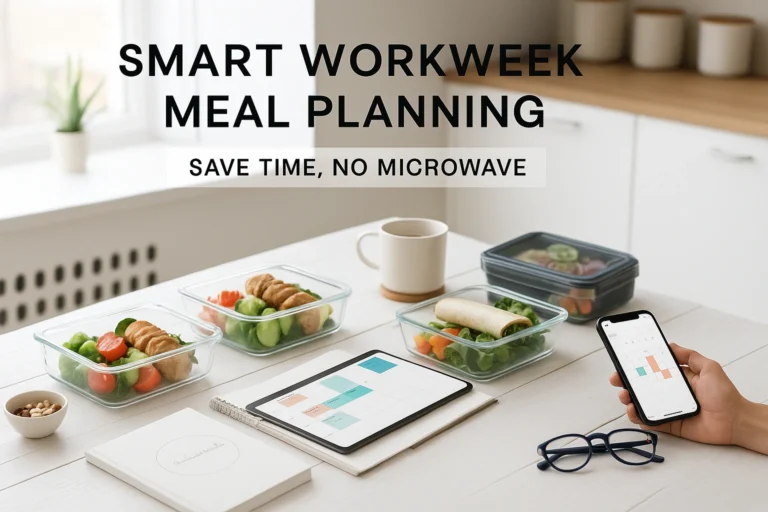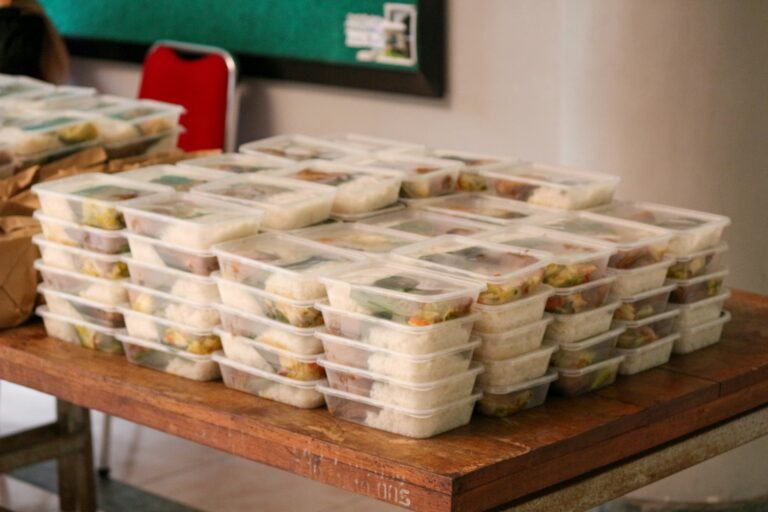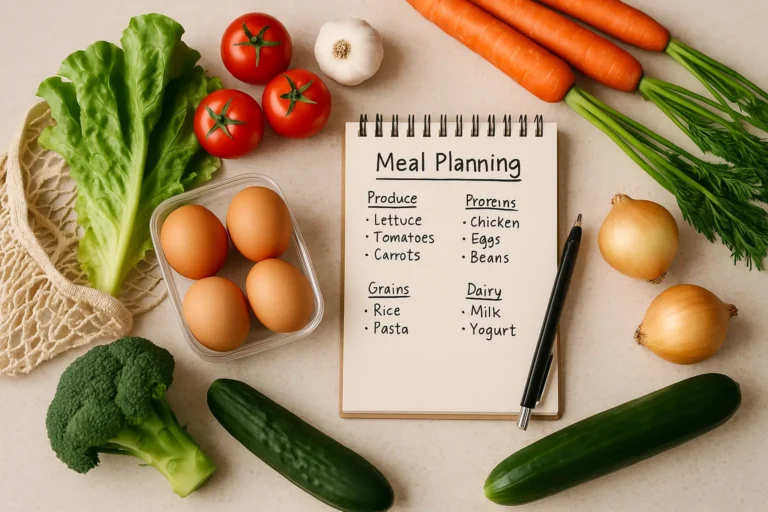Can You Really Feed a Family on $50 a Week? (2025 Realistic Challenge)
When I first told my wife I’d try a $50 meal plan for a week, she laughed.
“Eggs are five bucks a dozen now,” she said—and she was right.
We walked into the grocery store together, watching totals climb, and I thought, maybe this is impossible.
That first night, we spread the groceries on the counter—rice, beans, frozen veggies, a couple of sauces—and just looked at them.
It didn’t feel like much, but there was a spark of curiosity.
Could this small pile of food really feed us for seven days?
By the end of that week, we did it—not perfectly, but enough.
We ate well, spent $49.85, and learned something much bigger than saving money.
This isn’t about restriction; it’s about control.
A weekly $50 grocery plan shows you where your money leaks and how to manage your family grocery budget without guilt.
A consistent $50 meal plan isn’t about perfection—it’s a mindset shift that reshapes daily choices.
A structured $50 meal plan can transform how any household approaches food, proving that limits can create balance instead of stress.
1️⃣ The Reality: Why $50 Sounds Impossible (But Isn’t)
Food prices have spiked across 2025.
According to the USDA’s Food Plans: Monthly Cost of Food Reports, even the “Thrifty Food Plan”—the government’s minimal diet estimate—has risen sharply (fns.usda.gov).
Meanwhile, Americans waste nearly 30 % of groceries every week (Feeding America – Reduce Food Waste), which is like tossing away a third of your paycheck.
So no, $50 isn’t easy. But it’s doable when you treat it as a system, not a stunt.
When you start seeing it as part of your meal planning on a budget, the math starts making sense.
💡 Pro Tip: Track one normal week first. That’s your baseline before the challenge begins. Once you see patterns, adjusting becomes easier.
2️⃣ Step 1: Audit Before You Spend
Every budget meal plan starts at home.
Before writing your list, open your fridge and take stock of what’s already there.
One Saturday morning, I pulled everything out—half-empty jars, wilted spinach, forgotten leftovers.
By the time I finished, I had four meals’ worth of food hiding in plain sight.

That small cleanup instantly stretched our week’s groceries.
- Make an “Eat Me First” box for items near expiration.
- Label freezer containers with “Use by Friday.”
- Combine half-used jars and open packages before buying more.
Last week I found two soup cans, a stock box, and leftover rice—that saved me nearly $9.
Quick Tip: Before shopping, list three things you’ll finish first (milk, greens, leftovers). It’s a 60-second move that can save $5–$10 weekly and keeps your budget-friendly meal planning realistic.
Everything you already own is part of your $50—treat it as inventory, not a bonus.
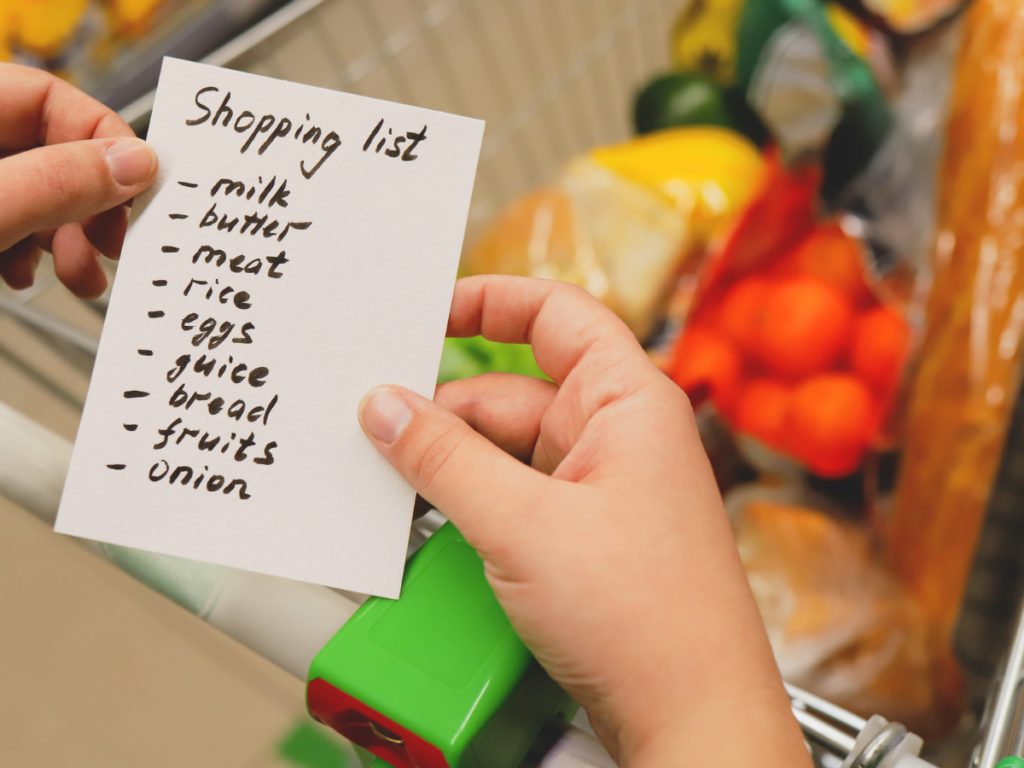
Want to reduce waste even further? Read The Frugal Home: DIY Fixes and Upgrades That Save You Money for simple home strategies that prevent food (and cash) from slipping through the cracks.
Reality Check Bonus
Let’s be honest—in 2025, $50 barely covers one restaurant meal for two.
So when people ask if this is realistic, the answer is: it depends on your habits, region, and how creative you’re willing to be.
The USDA’s Thrifty Food Plan shows that the average American family of four spends $255–$290 per week on groceries—about five times this challenge’s budget.
That means a $50 week isn’t about luxury or variety; it’s about awareness.
If you live in higher-cost areas like California or New York, aim for $60–$70 instead—the same system still applies.
What matters isn’t the number; it’s what you learn from trying.
You’ll discover how much of your grocery bill is habit, not necessity.
3️⃣ Step 2: Build 5 Core Meals for Your $50 Meal Plan and Rotate
Trying to invent new meals nightly drains money and time.
Repetition builds stability—and delivers affordable family dinners that never feel boring.
| Meal | Core Ingredients | Cost | Why It Works |
|---|---|---|---|
| Chili Night | Beans + tomatoes + ground turkey | $6.50 | Protein-rich and filling |
| Stir-Fry Bowl | Rice + veggies + egg | $5.00 | Quick, flexible, balanced |
| Egg Fried Rice | Leftovers + soy sauce | $3.40 | Turns scraps into full meal |
| Soup & Sandwich | Broth + bread | $6.00 | Comfort food, zero waste |
| Pasta Night | Noodles + sauce + greens | $5.50 | Familiar, customizable |
Cook rice or beans in bulk and these five can stretch into ten dinners.
That’s low-cost meal prep made simple.
These dishes are classic cheap family meals that stretch flavor and savings side by side—they’re simple, comforting, and repeatable, and they perfectly fit a weekly $50 meal plan.
My kids once complained, “Rice again?”
But when I changed the sauce or added eggs, it became “fried-rice night.”
Same base, new meal—and they never noticed.
Turns out, kids don’t notice beans if you call it “taco night.” 😂
💡 Reality Note: In higher-cost areas (like CA or NY), these five staples form the backbone of a $60–$70 weekly plan—same structure, different prices.
Looking for more ideas to stretch your grocery budget? Check out 9 Frugal Living Hacks to Save $100 Every Month.
4️⃣ Step 3: Smart Grocery Habits (5 Rules to Cut Impulse Buys)
Being frugal isn’t about extreme couponing; it’s about consistent choices.
Think of this as your smart grocery habits checklist—five decisions that prevent overspending and protect your weekly grocery budget:
- Stick to one store. Familiarity saves time and stress.
- Check digital deals. Ibotta, Flipp, and Safeway apps make it easy.
- Choose store brands. Often the same factory, just cheaper.
- Bring cash only. $50 in your pocket = real boundaries.
- Swap, don’t splurge. When prices spike, pivot to eggs or beans.

I used to walk into stores “just to grab milk” and walk out $70 later.
Now I bring my list, my envelope of cash, and nothing else.
It’s boring—and that’s why it works.
Consistency is what makes these frugal grocery shopping tips powerful—they turn random habits into predictable wins.
Once you know where your dollars go, your family grocery budget becomes something you control, not something that controls you.
If you’re trying to get serious about managing time and errands better, read Time Management Tips for Side Hustlers with a Full-Time Job to apply the same structure to your weekly routines.
5️⃣ Step 4: Protein & Produce for Cheap Family Meals
You don’t need steak to eat well.
Eggs, lentils, beans, and chicken thighs are the backbone of most affordable family dinners.
🍎 Nutrition Tip: Keep a simple trio—protein (eggs, beans, chicken), fiber (oats, veggies, lentils), and healthy fat (egg yolks, a bit of oil)—to stay full and balanced without overspending.
Buy produce in season or frozen; skip strawberries in winter, grab apples or carrots instead.
Swap quinoa for rice, kale for spinach—same nutrients, lower cost.
Once, I skipped a big meat sale because it didn’t fit the plan—and that decision saved $20.
Your family grocery budget should flex, not break.
Somewhere between the lentil soup and the last bowl of fried rice, you stop thinking about money and start feeling gratitude.
This challenge isn’t about what you cut out; it’s about what you learn to appreciate—flavor, creativity, and the strange joy of turning “cheap” food into something you’re proud to serve.

By Saturday night, we sat down to a simple dinner—rice, eggs, and vegetables—and it somehow felt richer than takeout.
We weren’t eating less. We were finally eating intentionally.
6️⃣ Step 5: Batch Cook for Budget Meal Planning (2 Hours · 21 Meals)
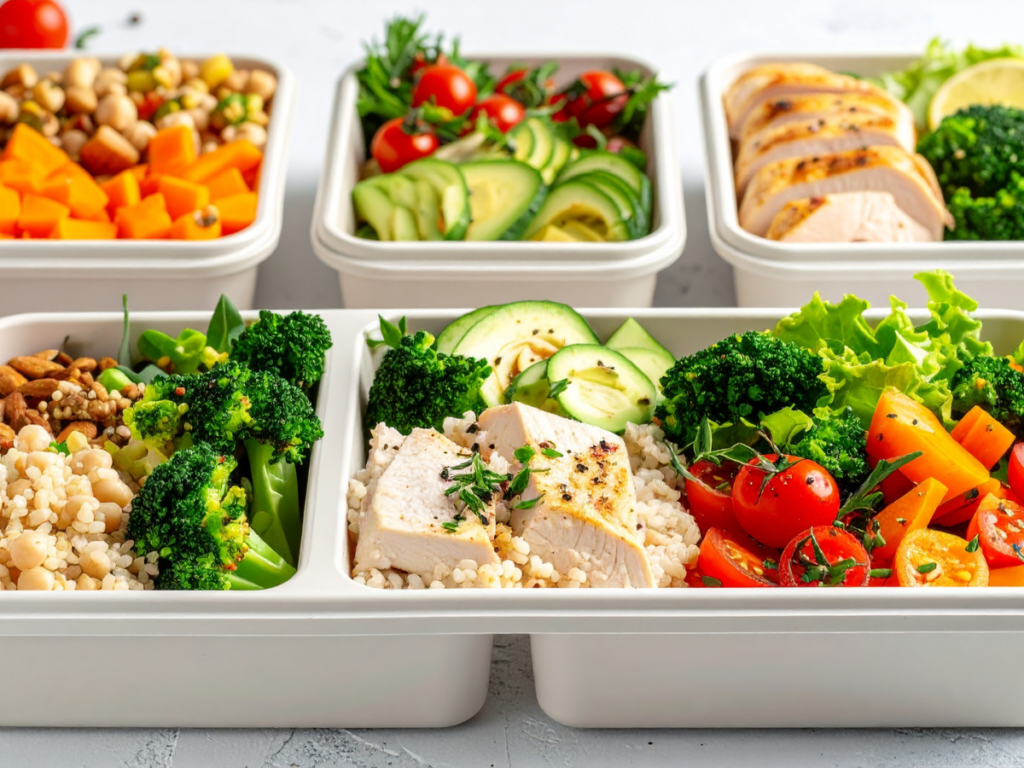
Batch prep is the quiet multiplier of every weekly $50 grocery plan.
Cook double on Sunday, freeze leftovers, and future-you eats almost free.
| Prep Day | Meals Made | Cost | Notes |
|---|---|---|---|
| Sun | Chili + rice | $24 | Four dinners ready |
| Wed | Oats + muffins | $6 | Grab-and-go breakfasts |
| Fri | Pasta sauce | $12 | Weekend sorted |
One Sunday, the kitchen looked like chaos—pans everywhere, kids stealing muffins—but for five days after, dinner was effortless.
That’s what meal planning on a budget really means: freedom from last-minute stress.
Over time, this rhythm becomes the heartbeat of your meal planning on a budget, giving structure to both your menu and your mindset.
Batch prep is the secret weapon behind consistent meal planning on a budget.
Related: Beginner’s Guide to Freezer Meals That Save Time and Money
7️⃣ Mindset: The Real Game-Changer
The hardest part isn’t the grocery aisle—it’s the mindset.
Most people quit because they see budgeting as punishment.
My first two attempts failed miserably; I caved and ordered takeout.
But on the third try, I tracked “wins”:
✅ 3-lb bag of beans for $2.79
✅ Turned leftover chili into burritos
✅ Spent $49 instead of $90
Three months later, I had nearly $300 saved—and more peace than I expected.
It stopped being about money and started being about control.
Apply these budget grocery tips one at a time, and they’ll quietly rebuild your family grocery budget.
“We’re a family of five,” said Lauren from Texas. “We spend $55 now instead of $150—and still have Friday pizza.”
That’s the point—progress, not perfection.👪 Segment Tip: Families can make two sauce versions (mild and regular); singles can freeze meals in smaller portions. Either way, food waste drops by half.
If you’re also looking to boost income while keeping spending low, check out 5 Side Hustles You Can Start After Work to Earn Extra Income.
8️⃣ Real Example: $50 Family Meal Plan
| Day | Breakfast | Lunch | Dinner | Cost |
|---|---|---|---|---|
| Mon | Oatmeal + banana | Veggie soup | Chicken rice bowl | $6.80 |
| Tue | Eggs + toast | Tuna pasta | Chili | $7.10 |
| Wed | Yogurt + fruit | Sandwich | Stir-fry | $6.20 |
| Thu | Leftovers | Bean burrito | Soup & salad | $5.60 |
| Fri | Pancakes | Rice bowl | Pasta night | $6.40 |
| Sat | Oats | Leftovers | Chicken curry | $7.20 |
| Sun | Scrambled eggs | Sandwich | Clean-Out Dinner | $4.70 |
| Total | $49.90 |
Notice how leftovers and rice bowls create extra dinners—stretching your budget meal plan without extra effort.
Pre-cook starches and you’ll save time and about 20 % in cost each week.
This challenge isn’t just about saving cash; every $50 meal plan teaches patience, creativity, and accountability in everyday cooking.
9️⃣ Grocery List That Actually Works
| Item | Qty | Price | Notes |
|---|---|---|---|
| Rice (10 lb) | 1 | $7.99 | Base for 6+ meals |
| Eggs (2 doz) | 1 | $5.00 | Breakfast + binder |
| Chicken thighs | 3 lb | $6.50 | Main protein |
| Beans/Lentils | 2 lb | $3.20 | Protein + fiber |
| Frozen veggies | 3 bags | $5.40 | Versatile |
| Pasta + sauce | 2 pk | $4.50 | Comfort staple |
| Oats | 2 lb | $3.00 | Breakfast base |
| Bread | 2 loaves | $4.00 | Sandwiches |
| Milk | 1 gal | $3.90 | Dairy use |
| Fruit (bananas/apples) | — | $6.00 | Snacks |
| Total | $49.49 | ✅ Under budget |
This grocery list keeps your family grocery budget realistic while maintaining your $50 meal plan goals.
Your weekly grocery budget doesn’t need perfection—just direction.
Repeat, tweak, and your system improves naturally.
🔟 Conclusion: Small Wins, Big Lessons
Some weeks you’ll overshoot, others you’ll underspend—and that’s okay.
Your $50 meal plan isn’t a test—it’s training for a better family grocery budget.
Over time, these cheap family meals become comfort, not compromise.
Once you find your rhythm, budget-friendly meal planning becomes second nature,
and your smart grocery habits start to feel like freedom instead of rules.
This challenge isn’t about cutting joy—it’s about awareness.
Because the real goal isn’t staying at $50 forever; it’s learning how habits shape money and how small choices build calm.
The average U.S. household now spends roughly $250 a week on groceries. The numbers may shift, but the system remains.
The key isn’t how much you spend—it’s how you spend. That mindset is what changes next month’s balance.

When that shift happens, your family grocery budget becomes a reflection of your values, not your limits.
Every mindful choice—each $50 meal plan, each small swap—builds a calmer, stronger foundation for your home and your wallet.
❓ FAQ (Readers Also Ask)
Q1. $50 feels impossible. Would $60–$70 still work?
Absolutely. The structure is identical—just adjust prices.
Center protein around eggs and beans and you’ll instantly trim $10–$15.
Q2. My kids are picky. Any tips?
Split sauces into two flavors (mild and regular) and add simple toppings like cheese or a fried egg.
You’ll keep the same recipes and still please everyone.
Q3. Is shopping twice a week cheaper?
Usually no. More trips mean more impulse buys.
Stick to one trip per week + a fixed list for the best results.
Written by Samuel Kim, founder of Simple Coffers — sharing real, practical ways to save smart, earn extra, and live simply.

